AppDynamics Tutorial
Introduction to AppDynamics
Businesses need maximum application performance and smooth user experience to keep ahead in today’s fast-paced software development environment.
Strong observability technologies are essential for complex systems and real-time monitoring and insights.
AppDynamics is a renowned application performance management technology. AppDynamics helps developers and IT teams optimize performance, identify bottlenecks, and provide a seamless user experience by providing extensive visibility into application activity, end-to-end transaction tracking, and real-time analytics.
AppDynamics is essential for designing scalable, high-performing apps in today’s dynamic digital world.

What is AppDynamics?
AppDynamics is an application performance management (APM) tool that enables organizations to monitor and enhance the real-time performance of their applications.
It offers profound insights into application health, user experience, and system performance, allowing enterprises to swiftly discover and rectify issues, hence assuring seamless and efficient digital experiences for users.
Importance of running an application in production
The importance of running an application in production, regardless of the platform or technology used.
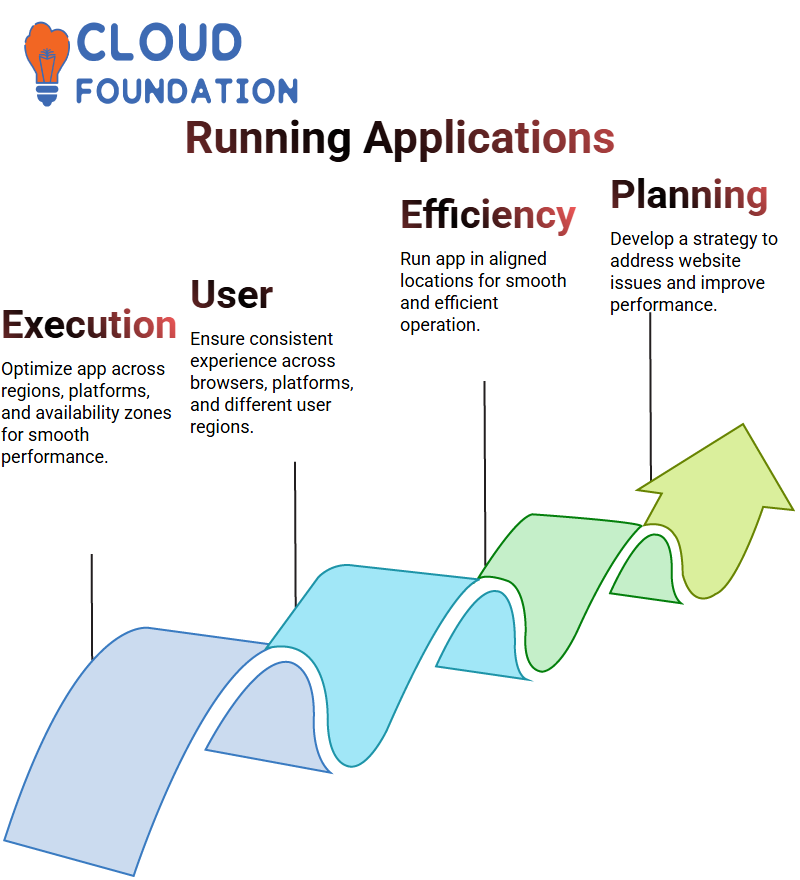
It highlights the need to ask questions about real end user experiences, underperforming regions, multiple business rights for etching, multiple availability zones, and the time it takes to run an application.
The need to ensure that the website is delivering a consistent user experience regardless of browser type. It suggests that users can browse applications faster than those in India, but there are still areas where users cannot access the site.
The need for a performance place plan to address any issues with the website. It suggests that the site should be running in the same location as the application, ensuring that the application runs smoothly and efficiently.
It mentions the importance of ensuring that the website is delivering a consistent user experience, regardless of the browser type. It also mentions the need to consider the potential impact of different web browsers on the user experience.
It emphasizes the importance of running an application in production, ensuring that it delivers a consistent user experience regardless of the browser type.
Managing the performance of an application on production servers
It highlights the differences in user experience across different operating systems, devices, and bandwidth providers.
The impact of third-party technology and services, such as ad networks and payment processes, on site performance.

The importance of understanding the impact of these factors on the overall performance of the website.
However, they are uncertain if this is necessary and if it is necessary to continue doing so. Understanding and managing the performance of an application is crucial for maintaining its success.
By understanding and managing these factors, businesses can improve their website’s performance and maintain a competitive edge in the market.
The issue of excessive data collection and analysis in app dynamics
The performance of the website is critical, as a survey conducted in the US found that one second delay in response time can reduce conversion by seven percent, page views by eleven percent, page views by eleven percent, and customer satisfaction by sixteen percent. This performance is critical for the website again.
Another survey found that over 51% of online consumers in the U.S. believe that site slowness is the top reason they would abandon a purchase.
When an online service fails, 75% of consumers move to another channel, leading to millions of dollars in lost purchases.
To monitor the performance of the website, distributed performance monitoring (APM) is recommended.
APM is a process used to analyze the performance of applications running in a distributed manner, as applications are running in a distributed manner nowadays.
At a high level, APM helps identify the root cause of the issue and identify the culprits.
It emphasizes the importance of effective application performance monitoring in app dynamics to address the issue of excessive data collection and analysis.
By implementing APM, businesses can improve their website’s performance and ultimately improve customer satisfaction.
APM (Application Performance Management)
APM is a set of tools that help developers analyze and improve their applications. These tools can be combined to create collections of tools, processes, and matrices to determine the performance of an application.
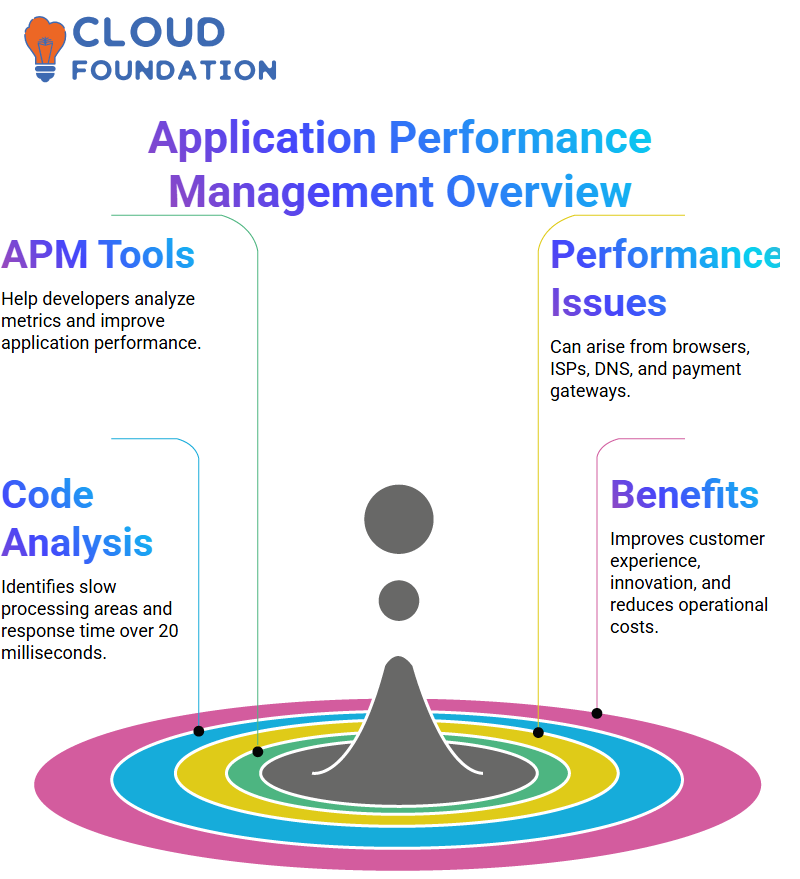
By analyzing these metrics, developers can identify potential issues and work towards improving the overall performance of their applications.
APM can be applied to various applications, such as those running in different networks, databases, mobile devices, platforms, and third-party libraries.
It is essential to monitor these applications to identify any issues or potential problems. This can be done by examining the response from the customer, the browser, ISPs, DNS, microservices, and microservices to the back end, as well as the payment gateways and third-party libraries.
Performance issues can also arise from various sources, such as the customer’s browser, ISPs, DNS, and payment gateways.

To address these issues, developers need to gather data from various sources, such as the customer’s browser, ISPs, and payment gateways.
They should also analyze the libraries and other resources used to manage the applications.
To address performance issues, developers should request and analyze the total exclusions time, which can range from a few seconds to thousands of milliseconds.
By understanding the root causes of these issues, developers can take proactive steps to improve their applications and ensure optimal performance for both the end user and the system as a whole.
The code is analyzed to identify the problem areas and how to address them. The issue is highlighted as slow processing time for requests, which are not limited to one class file or jar file.
The response time is also analyzed, with one microservice performing each request.
The problem is identified as a slow response time, with more than 20 milliseconds per request. This is due to the fact that database queries execution time is more than 20 milliseconds.
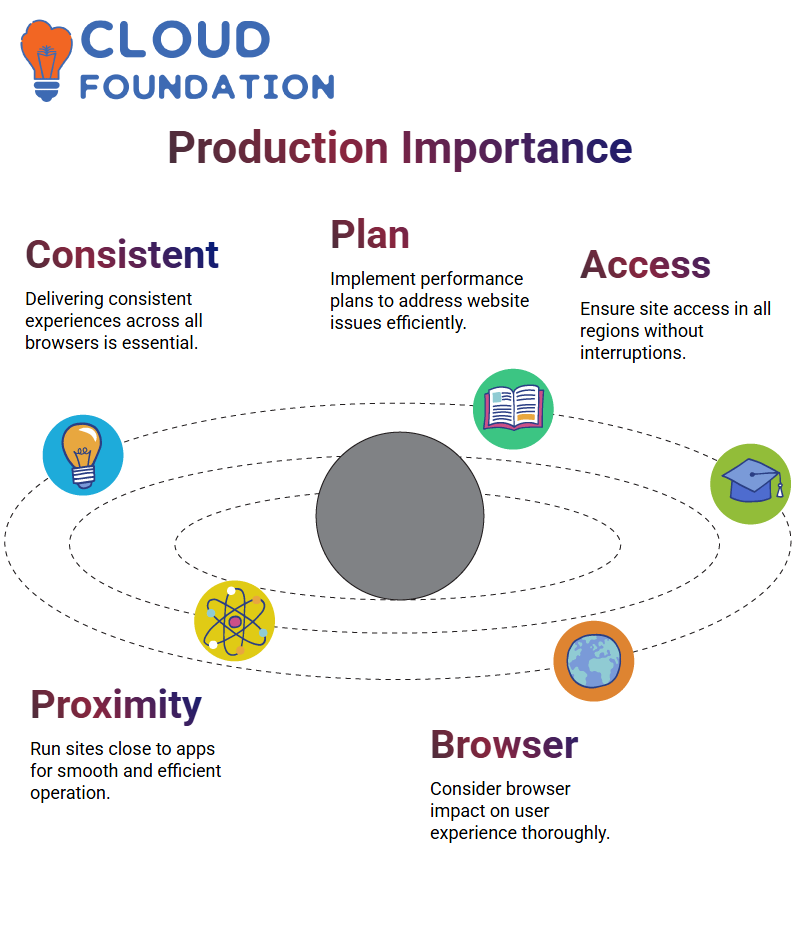
The use of infrastructure and productions in the process. The query “productions” is used to visualize the performance of the system.
The importance of understanding the processes involved in the code and the impact on performance. It suggests that understanding the processes involved can help identify areas for improvement and improve overall system performance.
The benefits of these measures include business contributing, continuous better end user experiences, greater customer satisfaction, decreased reliance on products, costly experts, greater innovation, reduced operational cost, ranking and tangible benefits checking, and moving out of their equations.
The two methods used for performing APM agent and agent are using you can do through and you can do through agents.
In app dynamics, both methods are possible, and they can be done through the agent and you can do through agents.
Process of installing an agent-based in APM (Agent-Based Platform) application
The user is asked to run a specific command to install an agent in Java, which typically involves running a jar file.
The agent-based authentications are installed in various packages, such as Java, Python, or DotNet.
The end user then hits the Tomcat, which performs various tasks and traces. The Tomcat then calls various methods to perform various functions and classes within the application.
These traces are then sent to various classes, micro services, and other services on the software.
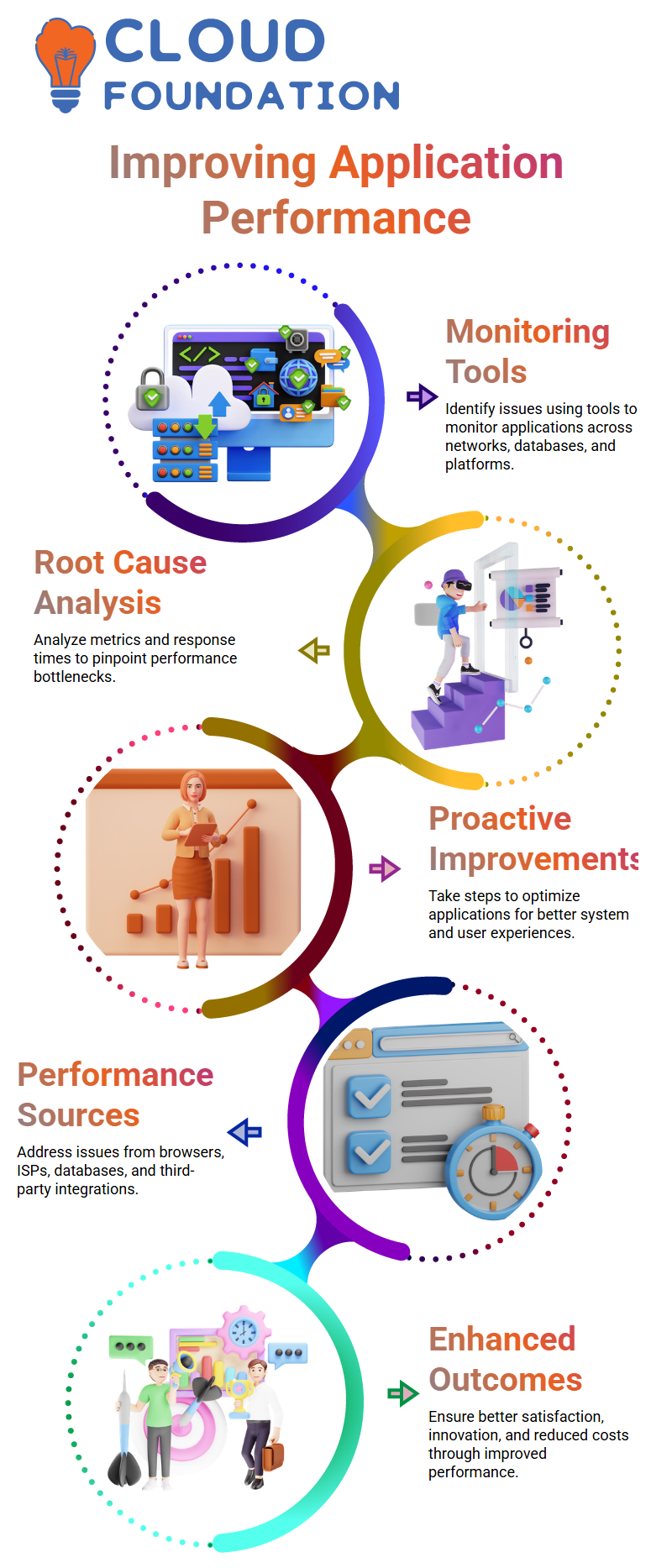
The user can then ask a Tomcat to perform various tasks, such as calling a method to this function, traveling to this class, and finally, to this class, which is a micro service.
This allows the user to get all the necessary information about the application’s performance.
It highlights the importance of monitoring Java to understand the traces and performance of the application. By monitoring the traces, the user can gain valuable insights into the application’s performance and make necessary adjustments to improve its functionality.
Latency in AppDynamics
Latency is a crucial aspect of response time, which is the time it takes for a transaction to complete. It is a part of the response time and can be measured by the number of times a request is sent and received.
The first response is the first response, and it is one of the main factors in understanding latency.
The major keyword connected time refers to the time it takes for a connection to send a request.
This time is measured in bytes per second, which is the amount of data flowing to and from servers. The size of the response is also measured in bytes per second.
The amount of data flowing to and from servers is measured in bytes per second throughput.

The standard deviation is another important factor in understanding latency. It is the difference between the time it takes for a request to be processed and the time it takes for a response to be received.
The standard deviation is calculated by dividing the total time taken by the total time it takes for a response to be processed.
latency is a crucial aspect of response time, and it is essential to understand the factors that contribute to it. By understanding these factors, developers can optimize their network infrastructure and improve overall performance.
Microservices with AppDynamics
Microservices are another type of APM tool that allows developers to develop different services. These microservices can be installed separately or integrated into a larger application.
Each microservice has its own set of services, which can be developed using different programming languages.
For example, some microservices can be implemented using a different programming language.
It highlights the importance of choosing the right APM tool for a specific project, considering factors such as ease of use, support, and pricing.
By understanding these factors, developers can make informed decisions about their choice of APM tool.
These microservices are running in various cloud environments, some of which are public and some private.
Some microservices use different languages, such as Ruby, Utilities, and MS, while others use different databases and deployment methods.
The challenges include tracing the atm stuff, which can be difficult for different teams. Different teams may ask for different input, such as the error rate of the Java application, the spend on specific regions for traffic, and whether the database is flowing down rails or not. Additionally, different teams may have different priorities in terms of API, which can lead to different priorities in terms of API operations.
To improve the deployment to Amazon, it is essential to bring these operations back in and fronted at one place.
This can be achieved by setting up metrics logging alerting and implementing practices for the entire team.
This will help ensure that all microservices are working together and that the team is working towards a common goal.
Conclusion
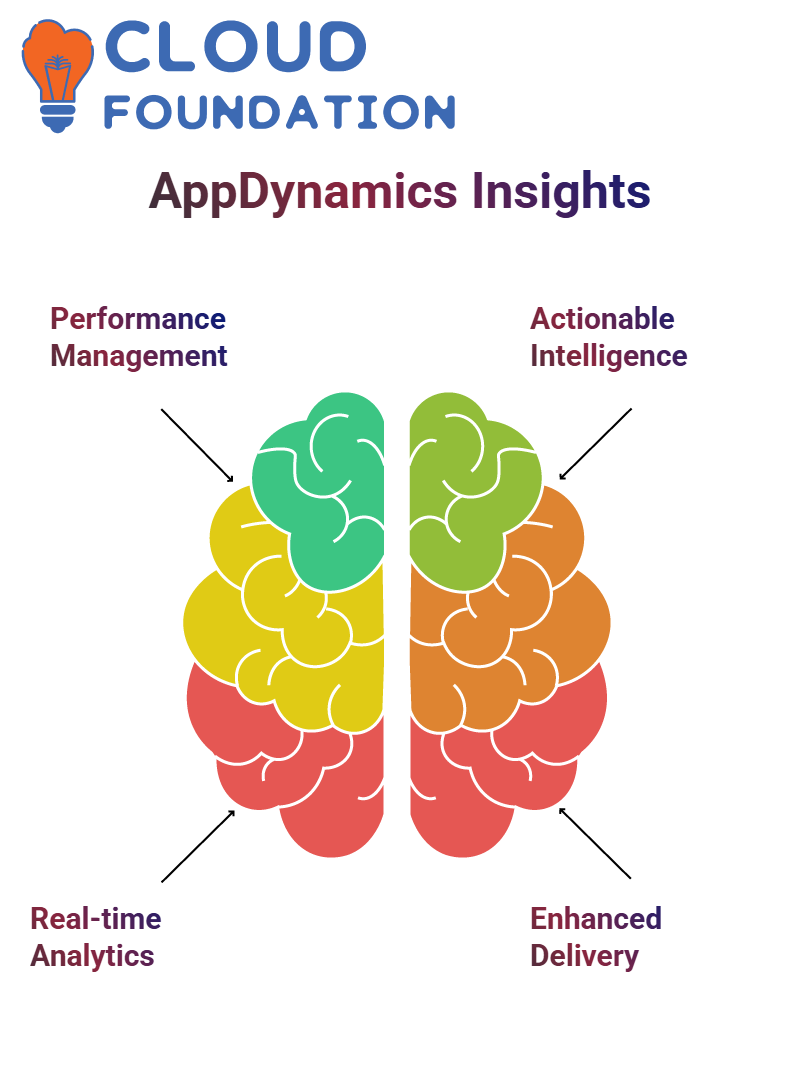
AppDynamics technology manages and monitors application performance, giving enterprises unique insights into user experiences and system health.
Real-time data analytics helps firms identify and overcome performance bottlenecks for high application availability and performance.
Actionable intelligence across complex, distributed systems makes the platform vital for operational efficiency and digital transformation.
AppDynamics helps businesses enhance service delivery, user experiences, and performance in today’s fast-paced digital market.

G. Madhavi
Author



